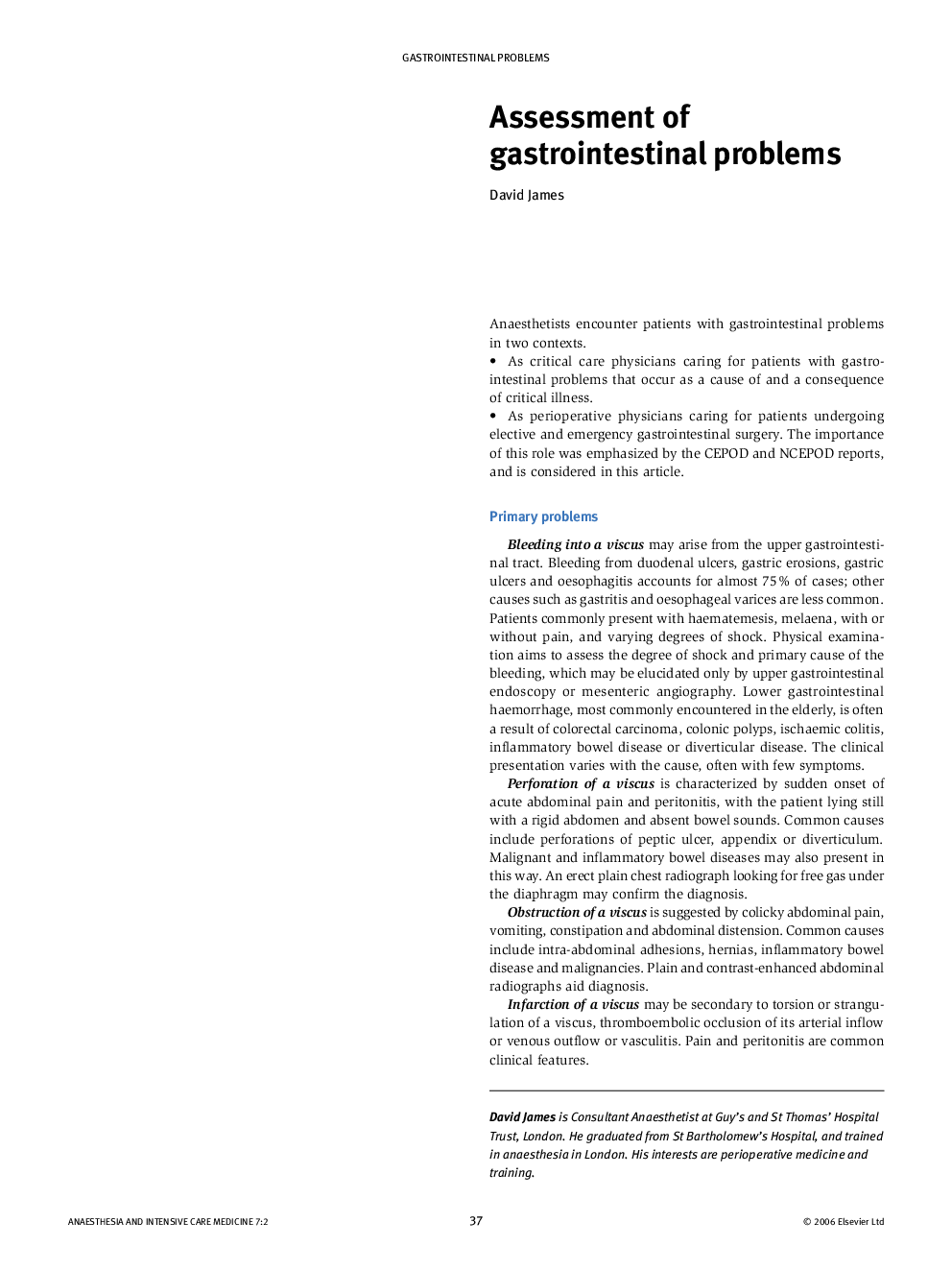| Article ID | Journal | Published Year | Pages | File Type |
|---|---|---|---|---|
| 2743958 | Anaesthesia & Intensive Care Medicine | 2006 | 5 Pages |
To assess the patient with gastrointestinal problems, the airway, breathing and circulation should be checked. When considering a patient with gastrointestinal problems for anaesthesia, the history should be taken in particular considering the presence and nature of pain, other gastrointestinal symptoms (e.g. anorexia, dyspepsia, nausea, vomiting, haematemesis, melaena, diarrhoea, constipation), previous abdominal surgery and recent drug ingestion. Physical examination should concentrate on the general appearance of the patient, in particular their posture, pigmentation, pallor and pattern of respiration. The cardiovascular system should be examined looking for signs of intravascular and extracellular fluid volume deficits. In the respiratory system, signs of respiratory distress or areas of lung collapse should be noted. The signs of sepsis should also be sought. These examinations should be followed by a review of all appropriate investigations to help estimate the magnitude of the secondary effects of the gastrointestinal problem. Haematological, blood chemistry, arterial blood gases and imaging techniques should be ordered only if the result is likely to alter the management of the patient. The primary gastrointestinal problems encountered are bleeding into a viscus, perforation of a viscus, obstruction, infarction or inflammation of a viscus and gastrointestinal emergencies. Secondary problems include water and electrolyte depletion, haemorrhage, pulmonary problems, sepsis and nutritional deficiencies.
